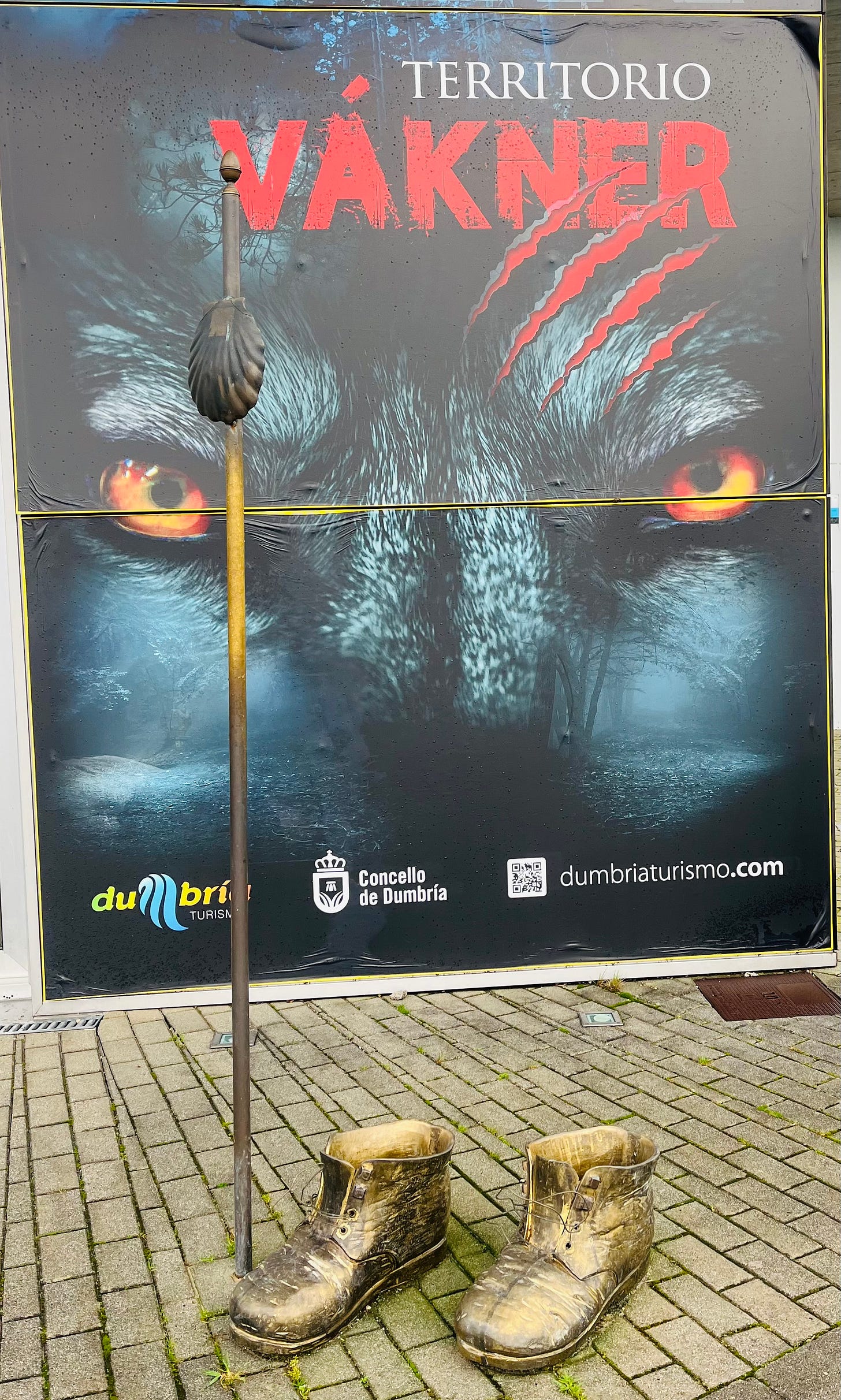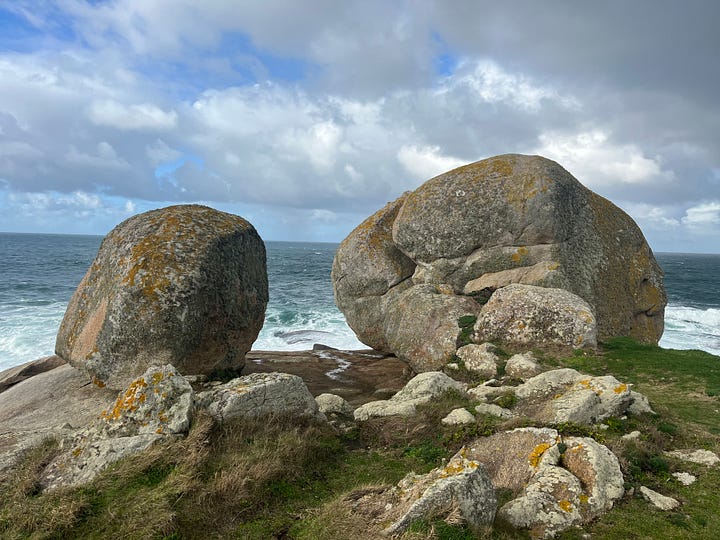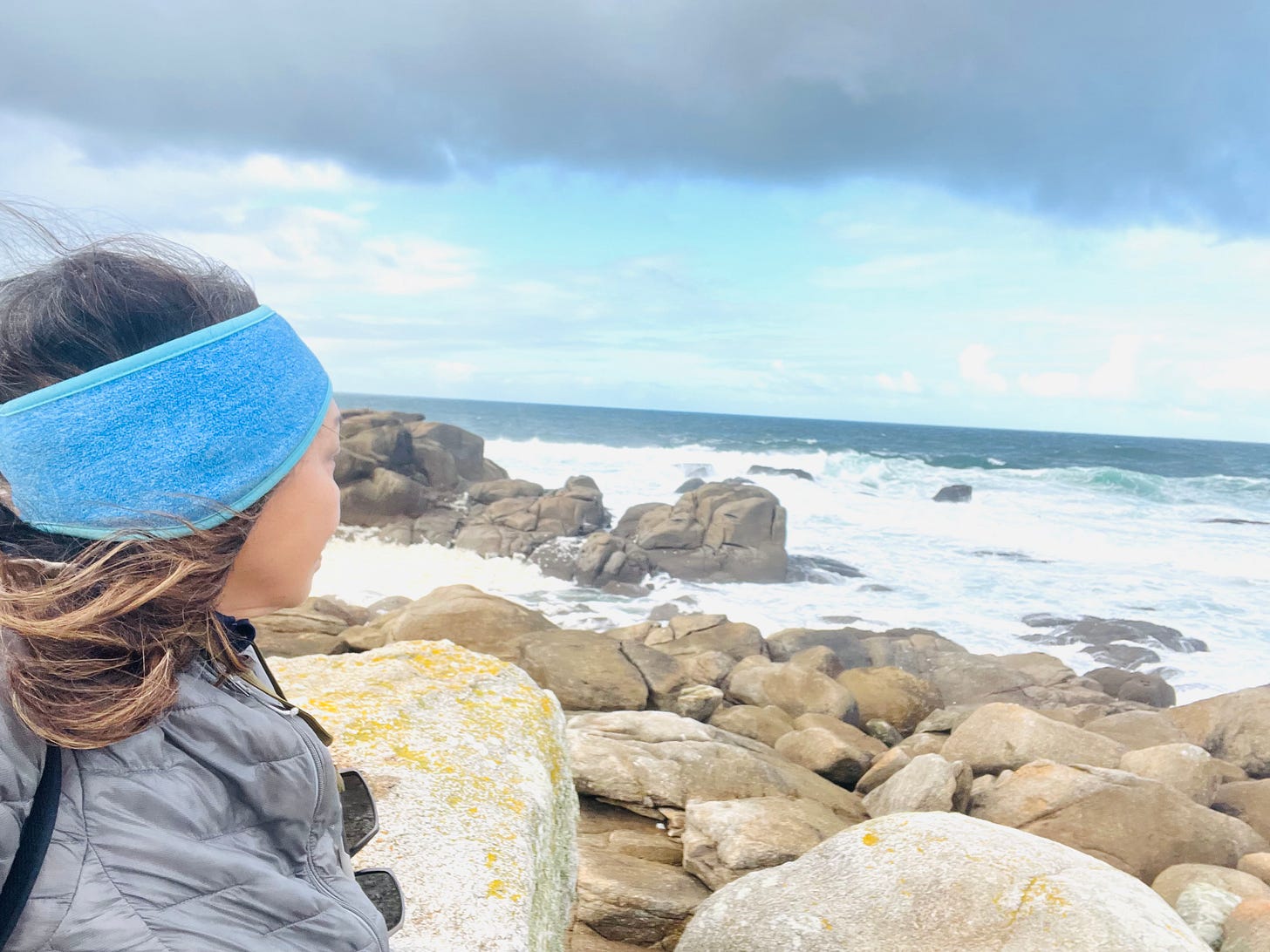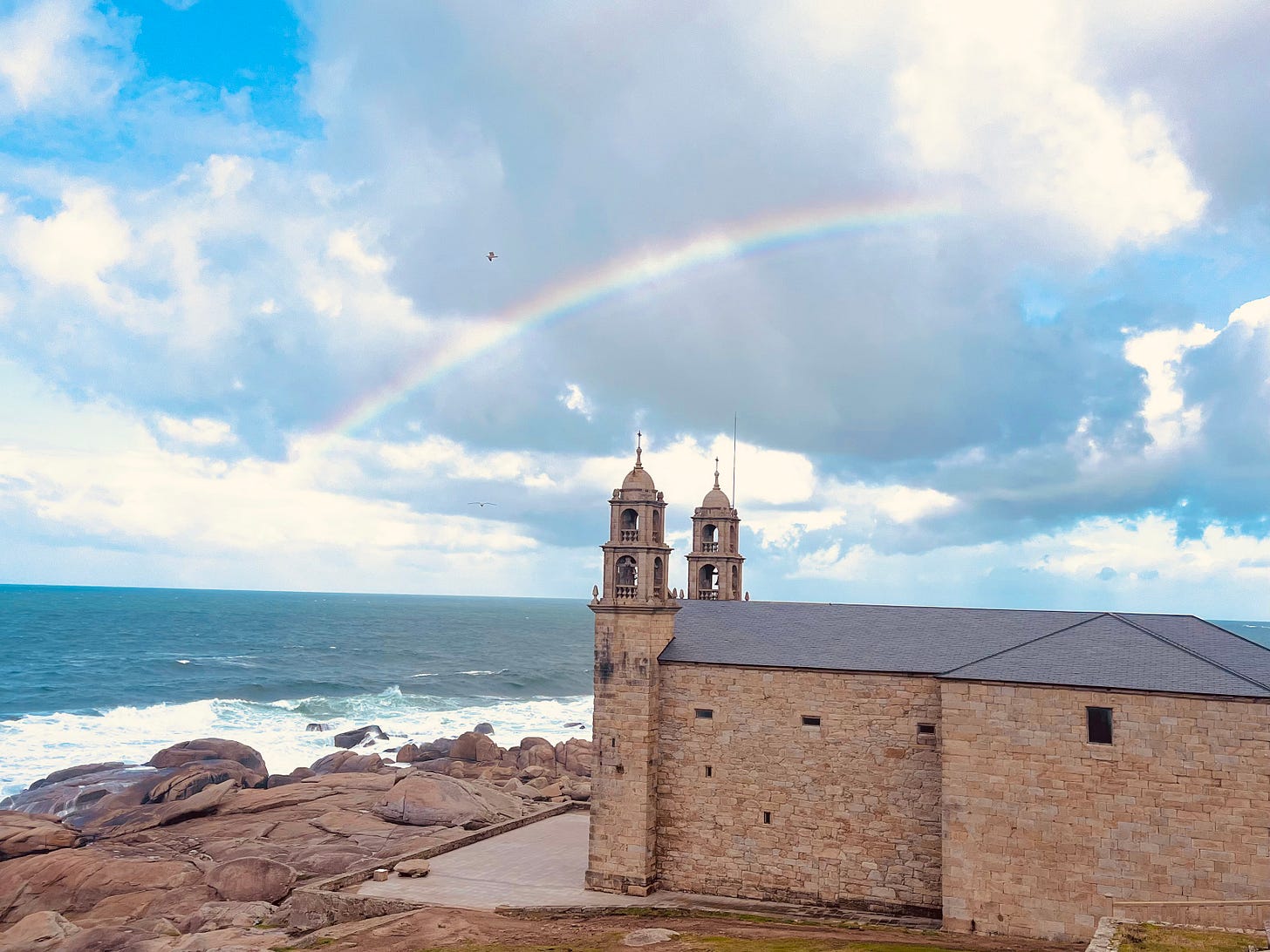Part 2: Journey to the End of the Earth for Beginners
Werewolves, Celtic and Catholic miracles in mystical Muxia, Spain. A five-minute read.
This is the second installment of a two-part series. Read part one here.
After I arrived in Santiago de Compostela (the Way of Saint James) in Galicia, Spain via the Camino Inglés, I decided to follow the example of ancient pilgrims, and Martin Sheen (in the movie “The Way”), and continued walking to the Atlantic Ocean.
Ancient pilgrims regarded the Atlantic coast as the end of the earth and thus, the true end of pilgrimage. This is also one reason why the seashell is such an important symbol of the Camino de Santiago pilgrimage; the ancients would pick up scallop shells from the Atlantic coast and bring them back home to prove they had completed the long, arduous and often perilous journey.

There are many ways to complete the journey to the Atlantic Coast also known as the Costa da Morte or Coast of Death (so named because its violently churning waters and rocky coast have caused many shipwrecks). You could walk to both towns, as follows (about four days or more):
Santiago - Finisterre (Fisterra in Galician) - Muxia, OR
Santago - Muxia - Fisterra
Total: 71 miles
Or you could just go straight to one town (about three days or more):
Santiago - Fisterra - Total: 55 miles
Santiago - Muxia - Total: 53 miles
Tip: Consult your favorite navigational app (I like Wise Pilgrim) for additional details.
Provided you have your pilgrim passport stamped each day (I got two stamps a day for good measure), you will qualify for a certificate of completion at each destination.
I chose to go to Muxia, enchanted by legends of werewolves, Celtic magic and Catholic miracles surrounding this place. Muxia is also quieter and less touristy.
The Werewolf of Galicia

Vakner is Galicia’s very own version of the Bigfoot or Loch Ness monster legends. It’s said that the ancient pilgrims encountered a werewolf-like beast in the forests of Galicia who would impede their journey. The legend seems to have been confirmed by a credible eyewitness account dating back to 1491, by no less than a bishop on his way to Fisterra, who recorded his encounter with Vakner in his memoirs.
Later that evening, on my way to Muxia, I had one of my more hair-raising and creepy hiking experiences ever. I hiked alone in darkness, on a deserted freeway cutting through Galician forests.
Yes, I saw nocturnal creatures’ eyes peering at me, reflecting back the beams of my headlamp. Could a Vakner been watching me from the dark? It certainly felt like it.
Tip: If you can avoid hiking alone through a Galician forest at night, that would be ideal and much more intelligent (than me). Take shorter winter days into account. Also, when hiking at night, it’s best to make loud noises to scare off curious nocturnal creatures. And—always have a ready and reliable light source when hiking!
The next morning, I presented my pilgrim passport and claimed my Muxiana certificate at the local tourism office.

Muxia’s top hits
Exploring this small and quiet town on foot, I quickly discovered how easy it was to visit the top sights of Muxia.
The Wound
Continue on the same stone path overlooking the Atlantic, and you’ll see this gigantic stone sculpture called A Ferida (The Wound) that pays homage to the thousands of courageous volunteers who helped mitigate an oil spill that occurred on the Galician coast in 2002.
Kilometer Zero
By the foot of the monument is a marker that holds special significance to pilgrims of the Camino de Santiago. It is milestone zero that marks the end of pilgrimage (the same milestone is also in Fisterra).
Sanctuary marking the apparition of the Virgin Mary
Still following the same stone path, one arrives at the Santuario Virgen de A Barca (Sanctuary of the Virgin Mary of the Boat). The church was built at the site where the Virgin Mary is said to have appeared on a stone boat, to the apostle James (Santiago, after whom the city of Santiago de Compostela is named) to exhort him to continue his mission of converting the locals.
Miraculous Celtic rocks


Pilgrimage to these and other gigantic boulders on this coast predated Christianity. It’s said that pagan Celts would journey from all over to visit these stones on this rugged coastline for healing and fertility. Christian missionaries later refashioned the pagan legends and claimed that these rocks were the remains of the Virgin Mary’s stone boat.
The dramatic final scene of the movie “The Way” was filmed here, for good reason.
This is not a tranquil scene. The constant roar of the wild ocean, waves churning and crashing on the jagged shoreline of the Coast of Death, are powerful reminders of greater forces beyond our control. These seething waters demand that we surrender to this truth.
I finally sensed closure. I had reached the true end of my pilgrimage. I was overflowing with gratitude for all the blessings I’ve received in my life thus far.
In mystical and magical Muxia, I glimpsed a promise of even more miracles to come.
I offer a free consultation for beginners to the Camino de Santiago. Whether you’re still thinking of possibly walking your first Camino, or are already committed to doing it but need to know how to get started, e-mail me at contact@beginnersmind.life for your free consultation. Or maybe you’re thinking of being a solo traveler? E-mail me your questions!










The rainbow at the end of your pilgrimage is symbolic of more miracles to come! It is simply magical and a beauty to behold! 😍